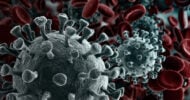The following is part of a series of original guest columns by the American Medical Association.
by Nancy H. Nielsen, MD
This year’s flu season promises to be different than in years past. With the potential of both seasonal and H1N1 influenza circulating this year, it is more critical than ever that health care professionals proactively talk to their patients about influenza.
Many patients will be confused about who needs the H1N1 vaccine, who needs the seasonal vaccine, and who needs both.
Health care professionals should drive the conversation to help patients understand that this year numerous strains of influenza may be circulating, in addition to H1N1, and that two separate vaccines are available and necessary to provide optimal protection for the recommended populations. Given this year’s recommendations – that many people receive both vaccines – the earlier we get people protected against seasonal influenza, the better.
Office-based physicians and health care providers will get many questions on the need, efficiency and safety of both the seasonal influenza and H1N1 vaccines, and we want to help them be as prepared as possible.
So how can physicians and health care providers better prepare for this unique flu season? We can start with being prepared for the unexpected. There is no way to know what the burden of the H1N1 virus will be.
Today, I am participating in the National Foundation for Infectious Diseases press conference in Washington, D.C. Because the burden of the H1N1 virus is unclear, this event is aimed at getting the word out to the public on the need to get immunized for seasonal influenza early, so physician offices will be more capable of vaccinating the recommended groups with the H1N1 vaccine when it becomes available in mid-October.
There are a lot of free resources on seasonal influenza and H1N1 available for both health care professionals and patients. For example, the AMA will be hosting a free webinar to identify action steps and guidelines for the 2009 influenza season on September 22. There is also a wealth of free information on both seasonal influenza and H1N1 on the AMA web site, including toolkits and patient handouts. The CDC recently prepared a special document for health care providers titled “10 Steps You Can Take: Actions for Novel H1N1 Influenza Planning and Response for Medical Offices and Outpatient Facilities” to help prepare physician practices for this flu season.
More resources for patients, health care providers and the media can be downloaded directly from the official AMA/CDC National Influenza Vaccine Summit web site. The summit represents more than 130 public and private organizations and convenes each year to address influenza and influenza vaccine issues and collaborate on prevention and education activities.
Many city, county and state health departments will be hosting free influenza clinics for residents this year. Physicians should be aware of these and other community resources that may assist them in vaccinating and educating their patients.
Physicians and other health care providers are recommended to receive both the H1N1 influenza vaccine and the seasonal vaccine. Despite a continued recommendation that health care providers be immunized against seasonal influenza, the vaccination rates for this group remain below the targeted rates. It’s important that we exemplify the messaging we promote to our patients and get immunized for the safety of ourselves, our patients and our families.
This flu season will be challenging, but by educating our patients on the importance of getting vaccinated against seasonal influenza, and preparing our practices for the influx of patients and new H1N1 vaccine, we can successfully brave this storm.
Nancy H. Nielsen is Immediate Past President of the American Medical Association.













![AI in American medicine [PODCAST]](https://www.kevinmd.com/wp-content/uploads/AI-in-American-medicine-190x100.jpg)


